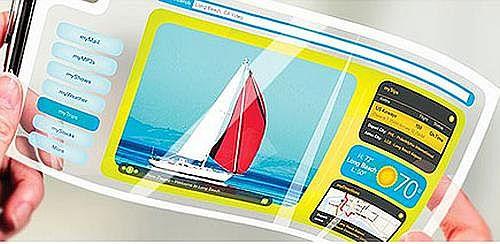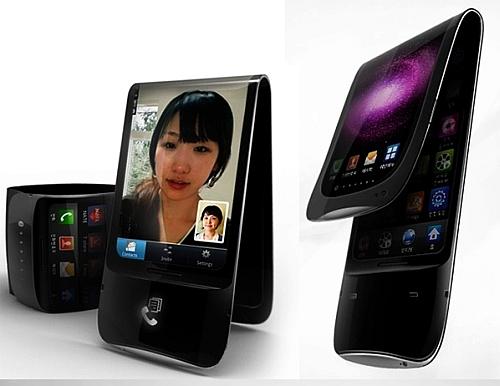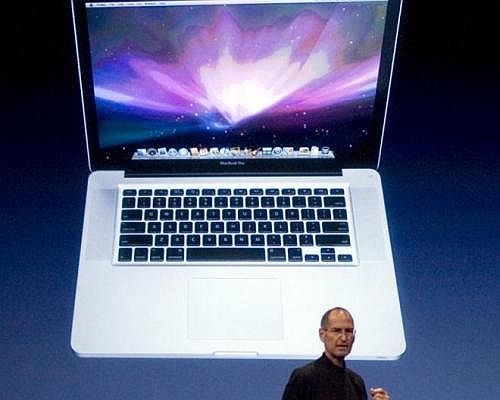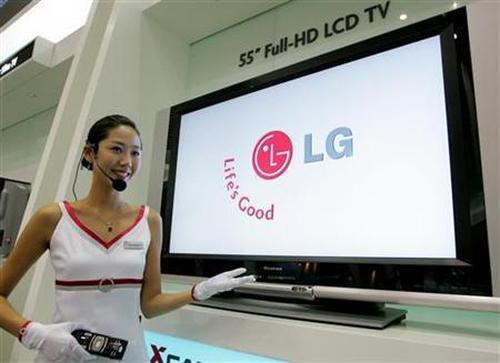 | « Back to article | Print this article |
Why you need to wait for unbreakable TVs, smartphones
Liquid-crystal display (LCD) screens were expected to slowly fade and die, giving way to lighter, thinner and tougher organic light-emitting diode (OLED) panels in everything from smartphones to televisions.
But LCD is refusing to go quietly as its picture quality keeps getting better. At the same time, the major backers of credit card-thin OLED panels - led by Samsung Electronics Co and LG Electronics Inc - are struggling to make the technology cheap enough to mass-produce.
The two South Korean firms this year showcased 55-inch (140 cm) OLED TVs, but priced at around $10,000 - 10 times that of an LCD equivalent - they have yet to reach store shelves.
OLED displays, used on Samsung's Galaxy S and Note smartphones, have been touted as the future display model to replace LCDs across the consumer electronics spectrum - from TVs to computers, laptops, tablets and smartphones.
OLED is more energy efficient and offers higher contrast images than LCD, and is so thin that future mobile devices will be unbreakable, and will be able to be folded or rolled up like a newspaper.
But OLED panel makers such as Samsung Display and LG Display have yet to address major manufacturing challenges to lower costs to compete against LCD panels.
Click NEXT to read more...
Why you need to wait for unbreakable TVs, smartphones
At the same time, LCD panels, which are used on 9 of every 10 television sets, are still evolving and show no sign of giving way in this latest battle to set the global standard - less than a decade since LCD effectively killed off plasma screens.
"OLED still has a long way to go to become a mainstream display, as it has to become bigger and improve picture quality," said Chung Won-seok, an analyst at HI Investment & Securities.
"The use of OLEDs will continue to be confined to small displays at least for the next 2-3 years. Its usage as a mainstream TV panel is only likely in 2014, but even then there's a possibility of intense competition with LCD TVs as that technology keeps improving," he added.
According to DisplaySearch, it will take another four years for OLED screens to capture less than a tenth of the global TV screen market.
PIXEL WAR
Far from fading, LCD panels now offer better picture quality - up to four times better than OLED - and use less power, creating robust demand from smartphone and tablet makers.
As has often been the case, Apple Inc moved the goalposts by upgrading the display resolution for its iPhone and iPad, still the high-end LCD market's gold standard, prompting rivals to upgrade their display panel qualifications.
Click NEXT to read more...
Why you need to wait for unbreakable TVs, smartphones
Analysts at Macquarie predict Apple will adopt high-resolution screens for the MacBook Air and iMac monitor next year, accelerating the industry's shift to high-resolution displays.
"It's only a matter of time (before) other high-end notebook companies such as Sony Corp, Toshiba Corp and Samsung upgrade their screens to high-resolution to compete with Apple's MacBook series," Macquarie analyst Henry Kim wrote in a recent client note.
Rivals are taking note
Taiwan's HTC Corp has introduced the Droid DNA smartphone with a 440 pixel per inch (ppi) density - the sharpest smartphone screen yet, with far higher resolution than the iPad's 330 ppi and the iPhone 5's 326 ppi. Samsung's Galaxy S III, which uses an OLED screen, has 306 ppi density.
"The pixel war is an absolute bonanza for LCD makers," said Kim Byung-ki, analyst at Kiwoom Securities. "Manufacturers from LG Display to Samsung, Sharp Corp, AU Optronics Corp and Chimei (Innolux) all will gradually convert their traditional lines into more high-end product fabs, and that will curtail supply and boost profitability."
These higher-resolution panels cost more than double the commodity-type LCD screens, boosting panel producers' profits. Even Samsung, the standard bearer for OLED panels and also a major LCD manufacturer, is actively promoting LCD screens for tablets and laptops over OLED, said a person familiar with the matter, who was not authorised to talk to the media so didn't want to be named.
Sharper resolution LCD TV screens also mean OLED is struggling to make inroads in that market.
Click NEXT to read more...
Why you need to wait for unbreakable TVs, smartphones
Both Sony and LG Electronics now sell ultra HD (high definition) LCD sets that boast four times the picture quality of HD TVs. The two firms, which are selling 84-inch TVs, aim to reduce that size to cater for more popular smaller sets.
IN TIGHT SUPPLY?
To squeeze more pixels per inch, panel makers are upgrading their thin-film transistor (TFT) panel production facilities to new IGZO or LTPS processing technologies that require almost twice as many processing steps and which suffer higher faulty product rates and lost output.
Japan's Sharp is the frontrunner in IGZO technology, which uses indium gallium zinc oxide instead of amorphous silicon, in panel manufacturing. LG Display, a major supplier to Apple, is investing 1.2 trillion won ($1.1 billion) by end-2013 in its production of low-temperature poly silicon (LTPS) panels - a technology used to make screens for the iPhone and iPad.
While new technologies can be game-changers, these panels are not simple to produce, limiting availability and driving up manufacturing costs. Some warn of an LCD supply shortage.
"The LCD industry is improving more strongly than expected and panels are likely to be in short supply from 2013, as manufacturers upgrade their lines to increase high-end products. This requires more processing time and steps, reducing total output," said Kim Dong-won, an analyst at Hyundai Securities.
Click NEXT to read more...
Why you need to wait for unbreakable TVs, smartphones
Converting a line to IGZO and LTPS processing can cut LCD output by 30-70 percent, according to BNP Paribas.
As LCD prospects improve, LG Display, the world's top LCD maker, swung to a quarterly profit in July-September, ending a run of seven straight quarterly losses.
LG Display is expected to continue its solid performance, as Apple buys fewer parts from rival Samsung and moves more to high-end displays on a wider range of its products.
LG Display shares have risen by around a third in 3 months, double Samsung's gains. In Taiwan, AU Optronics shares are up 41 percent over that same period and Chimei is up 45 percent.
Shares in cash-strapped Sharp hit a 2-month high on Wednesday after the company secured an up to $120 million cash injection from Qualcomm Inc, which will help it fund development of its IZGO technology.
As the global TV market is forecast to shrink 1-2 percent next year, panel makers with higher exposure to the booming mobile markets will lead a recovery, say analysts, though some caution that shares may be rising too fast.
"LG Display and its peers are actually sowing the seeds of the next cycle downturn by doing what they always do - wherever they see a profit opportunity, they focus on it, adding capacity and dissipating the excess returns," said Stanford Bernstein analyst Alberto Moel.

© Copyright 2024 Reuters Limited. All rights reserved. Republication or redistribution of Reuters content, including by framing or similar means, is expressly prohibited without the prior written consent of Reuters. Reuters shall not be liable for any errors or delays in the content, or for any actions taken in reliance thereon.




